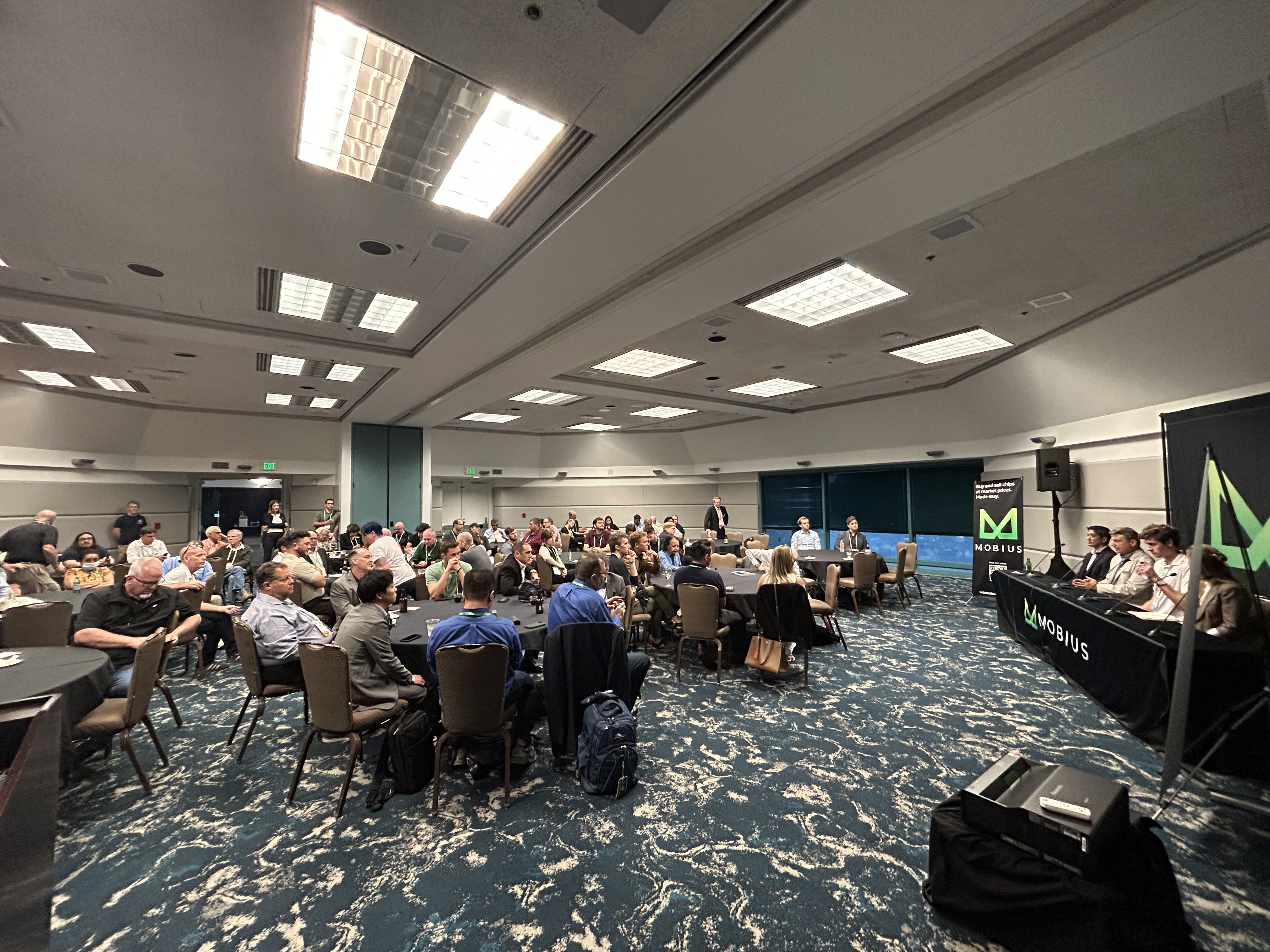An evening that hit home for manufacturers
Hosted and moderated by Margaret Upshur, founder and CEO of Mobius Materials, the Supply Chain Resiliency Panel brought together experts from across the manufacturing ecosystem:
- Olaf Hichwa, CEO of Neros, a U.S. drone manufacturer scaling domestic production
- Greg Papandrew, Co-founder of Direct PCB, a veteran in global PCB sourcing
- Creighton Chin, Senior Associate at FD Associates, a compliance expert with two decades in export controls
Together, they offered a candid look at the state of electronics manufacturing—where domestic capacity, compliance, and geopolitics collide.

Domestic manufacturing: urgency meets opportunity
As global volatility continues to ripple through the supply chain, Olaf Hichwa opened with a direct challenge to rethink where and how we build.
“The only way to maintain Western superiority in defense is through mass production of modern systems,” said Hichwa. “We built every part of our drone stack—from radios to motor drivers—on Western silicon and U.S.-made boards.”
That commitment isn’t cheap or simple. Despite record investment, America still manufactures only a fraction of the world’s printed circuit boards. Greg Papandrew underscored the scale of the gap:
“At one point the U.S. built 30 percent of the world’s PCBs. Today it’s around four,” said Papandrew. “Even if we start now, it’ll take years to rebuild capacity.”
Both agreed, meaningful reshoring will require public investment, private partnerships, multi-year commitments from OEMs, and sustained demand from government and industry alike.
Compliance is everyone’s job
Turning to the regulatory landscape, compliance often viewed as a barrier is increasingly becoming a competitive advantage. The panelists reminded attendees that compliance isn’t a back-office task, it’s an engineering discipline.
“Any company engaged in international transactions needs a strong compliance program,” said Creighton Chin. “That starts with training and established procedures at the functional level—engineers, buyers, and suppliers all need to understand export controls.”
Papandrew added a cautionary story. “I’ve seen customers send entire design packages abroad without realizing the risk,” he said. “Once you hit send, that IP is gone.”
Chin explained that even a small misstep, such as sending full schematics to an offshore supplier, can unintentionally transfer controlled data. Effective compliance programs begin with education, supplier vetting, and well-documented control processes, all grounded in awareness of ITAR and EAR requirements.
Volatility is the new normal
Tariffs, shifting trade policies, and geopolitical uncertainty now shape daily production planning.
“Right now, the tariff on a six-layer board is 55 percent; on a four-layer, 30 percent. That may change by Thanksgiving,” said Papandrew. “How do you plan for that?”
Hichwa added that companies are being forced to anticipate global events instead of focusing purely on engineering. “Designers are spending more time predicting conflicts and tariff swings than optimizing performance,” he said.
The panel agreed that the answer lies in real-time visibility—tracking cost, lead-time, and regulatory exposure across suppliers—to make proactive rather than reactive decisions.

Five lessons from the PCB West panel
1. Resilience starts with visibility.
Map every supplier and sub-tier dependency. You can’t manage what you can’t see.
2. Diversify, don’t duplicate.
Adopt regional variety (“China + 1,” “U.S. + Mexico”) to spread risk without excessive redundancy.
3. Integrate compliance early.
Treat export-control reviews like design-for-manufacture checks—built into development, not bolted on later.
4. Create steady demand signals.
Domestic capacity grows only when OEMs commit multi-year volumes that justify investment.
5. Turn transparency into an asset.
A verified, traceable supply chain builds customer and regulator trust—and becomes a market differentiator.
Where Mobius fits in
As moderator, Margaret Upshur connected each theme back to Mobius’s broader mission: improving transparency and liquidity across the electronics supply chain.
Mobius Materials operates the first authenticated secondary marketplace for electronic components, providing manufacturers and contract assemblers with:
- Vetted suppliers and authenticated parts backed by testing and certification
- Access to rare or excess stock that keeps production lines moving
- 10–70 percent cost savings through verified surplus inventory
- Domestic and near-shore listings that shorten lead times and reduce freight risk
By reintegrating unused components into circulation, Mobius helps teams de-risk sourcing, recover working capital, and strengthen supply-chain resiliency.
A call for collaboration
As the session wrapped and the networking happy hour began, one theme resonated through the room: resilience requires partnership.
“Transparency and trust,” Upshur said, “are what connect every link.”
From drone builders to PCB brokers to compliance experts, every stakeholder has a role to play in rebuilding a stable, self-reliant electronics ecosystem. Mobius Materials will continue convening these conversations—and building the infrastructure that makes collaboration possible.






